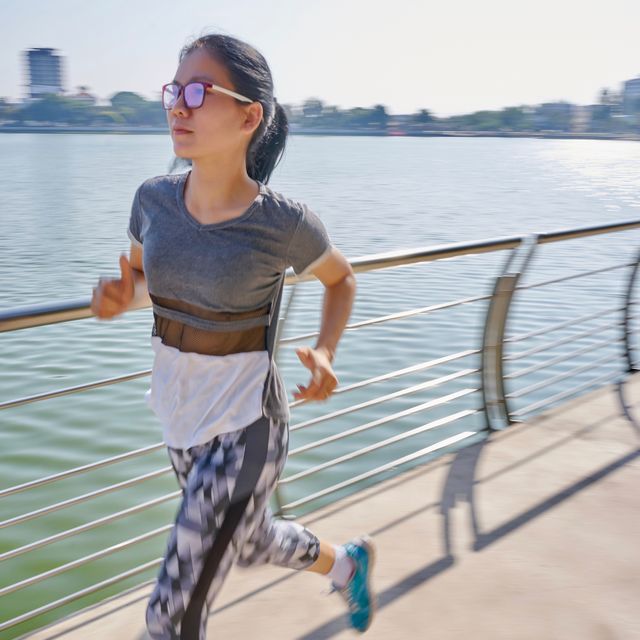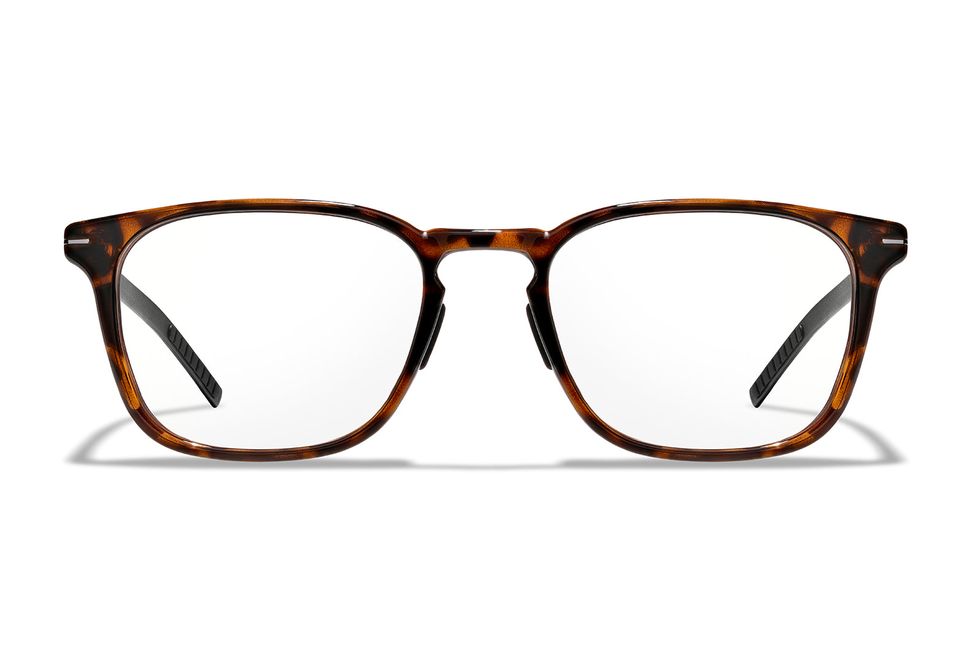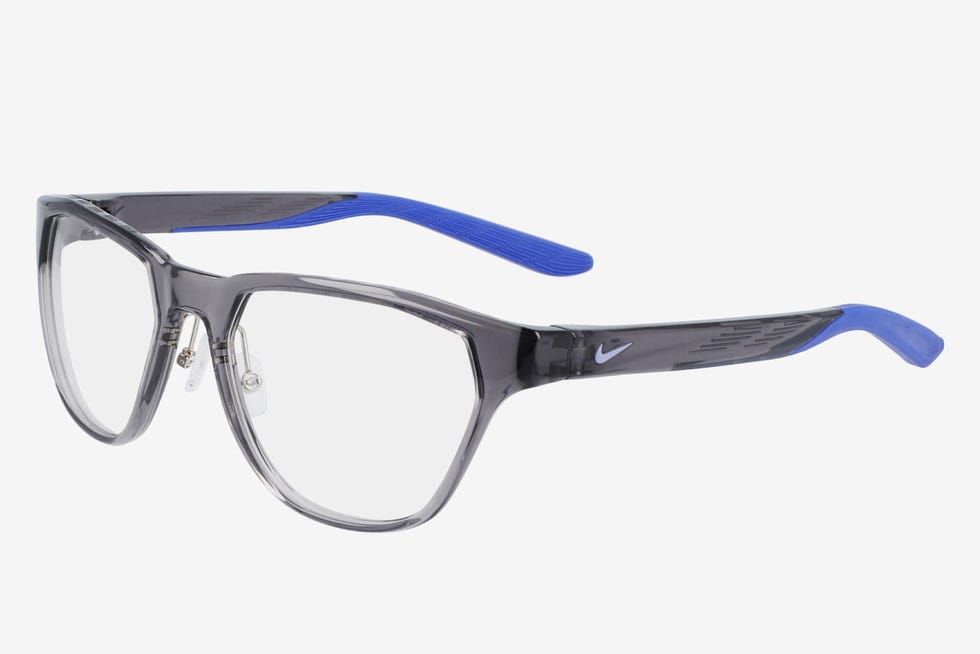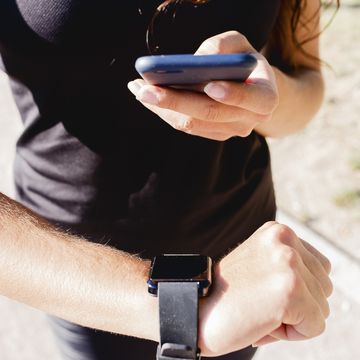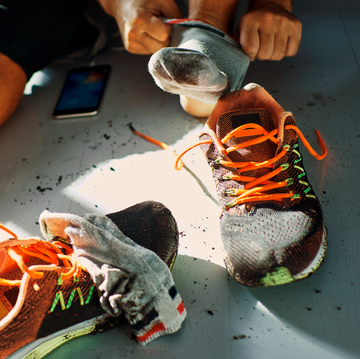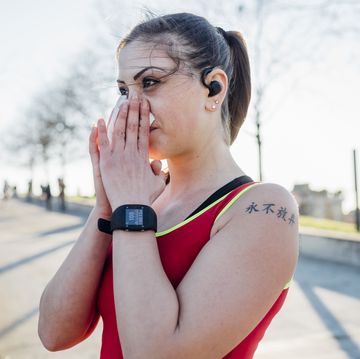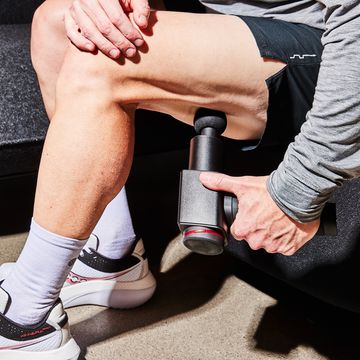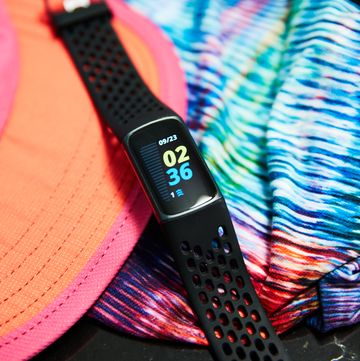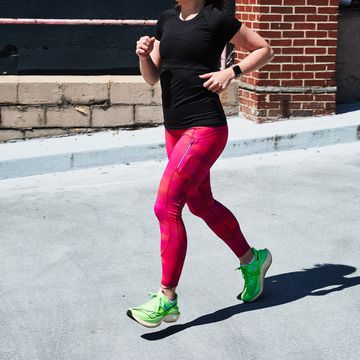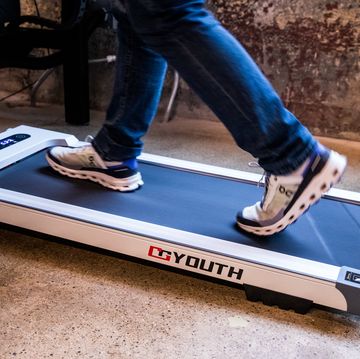If you wear glasses and you run, then you’ve probably been guilty of chasing miles without your glasses, at least at some point. Maybe you’ve been pinched for time and didn’t want to make the effort to put in your contacts. Or maybe you just don’t think it’s a big deal to ditch your glasses when running. But the truth: You could be putting yourself at risk if you don’t run with clear sight.
“It’s important to wear your glasses not only to see clearer and further, but to also decrease your risk for injury. A runner with a mild prescription may be able to run safely and comfortably without glasses, but the majority of people would benefit from prescription eyewear when running,” says Scott Huggler, O.D., optometrist of Nazareth Eye Associates in Nazareth, Pennsylvania.
If a runner cannot see clearly, they miss the small rock, curb, or subtle changes in terrain that can cause injuries, from a mild sprain to a torn meniscus, he says. So, is it worth ditching your glasses and risking forced time off?
Gary Martin, 18-year-old recent high school graduate who’s running at the University of Virginia in the fall and a sub-4:00 miler, says he doesn’t notice his glasses when he’s running unless it’s pouring rain. “I train in [glasses] all the time. Cross-country made me want to wear them, because there’s a lot more to worry about, like sticks and rocks. So I had to wear them for that or else I’d probably trip on something.”
Martin, who typically wears Rudy Project Step 1 Ophthalmic frames, says glasses were necessary during his track meets as well, so he could determine who to grab the baton from, considering all the teams were wearing black uniforms.
So how do you find a pair of glasses that work for you and don’t disrupt your miles? We spoke to experts and put eyewear designed for activity to the test to help you find your best match.
What should you look for in running glasses?
While both dress glasses and running glasses will give you clear vision, Huggler says running glasses offer different features. Here’s what he says to look for:
- Frames that are ultralight and durable
- Aim for a wrapped-frame design to maximize protection and allow for the greatest field of vision
- A snug fit, as this will decrease frame movement
- Frames with no-slip silicone nose pads and rubber grips (on the temple) to help prevent slippage from sweat
- Lenses made from lightweight material (such as Trivex and polycarbonate), because they’re lighter and more impact-resistant than plastic
- Lenses with UV protection to decrease effects of UV exposure such as corneal damage, cataracts, and macular degenerations
Should you wear bifocals to run?
The good news is that bifocals are generally not needed for running. “The distortion from the bifocal in downward gaze can be problematic, especially over surfaces not perfectly smooth,” Huggler says.
“The biggest complaint we hear from our runners is not being able to see their watch to check time and pace, but new technology has solved this problem with watches that wirelessly connect to earphones, giving the runner valuable information on pace, splits, distance, and time,” Huggler adds.
If you don’t want to wear earbuds, Huggler recommends a bifocal purposefully set lower than your traditional glasses. This will allow you to take a quick downward glance to read your watch, but not compromise your distant view.
Also, if you just wear reading glasses, consider a large-faced watch with a bold backlit face and large numbers in lieu of glasses, Huggler says. If that doesn’t seem to work you could opt for that earbud bluetooth connection for stat announcements.
The bottom line on running with glasses
You can still look stylish in today’s running glasses, and feel confident knowing that your eyes are protected and your sight is clear. It’s always best to try on several frames and find what’s right for you.
Martin says he’ll stick with running with glasses (and considering his fast splits, we’ll follow suit). “It’s funny, because I read social media; I’m on Twitter, I’m on Instagram. I see people comment about how it’s this nerdy look, the curly hair and the glasses, which I think is funny,” he says. “But I embrace it.”
Top Running Glasses to Try for Your Next Workout
Runner’s World staffers who typically ditch their glasses on the run decided to slip into these styles to test them through many sweaty spring and summer miles. These three supported our efforts, without slipping and with much better vision.
Stylish and super lightweight, you almost forget these glasses are even on your face. Thanks to the nose pads and grips at the temple, they stay in place, too, even when getting sweaty. They also come in regular and small size, for those with smaller face shapes that need a tighter fit, and offer fog resistance. You can upgrade your lens to the Trivex, for more durability, as well as a photochromic lens, which adjusts to the light, and blue light protective lenses.
These medium-sized frames feature a rounded design which enhances your field of vision, and also makes them feel very secure and stable while running. They come with nose pads and temple tips that gently grip the skin to stay in place, meaning they don’t slip around, even as you’re bouncing step to step. Smith knows the market on sport eyewear and these frames are designed with athletes in mind. They also have options for Trivex frames, as well as the light-adjusting photochromic, and blue light reducing lenses. (For those with shorter pupillary distance, check out the Smith Spindle too.)
Another set of lightweight, medium-sized frames, these come with a more standard nose piece, but it still feels comfortable and secure on the road. The frames also sit a little farther from the face, thanks to that nose pad, which gives them that barely there feel. No-slip material on the temple also gives them the stay-put properties you want while running and sweating. The Nike's also have options for light-adjusting photochromic, blue light reducing, and fog resistant lenses.
Jennifer Acker joined the editorial staff of Runner's World and Bicycling in January 2022. A former freelancer writer and NCAA runner, she started running as a kid and basically never stopped. She also loves outdoor adventures, like hiking, skiing, and mountain biking.
